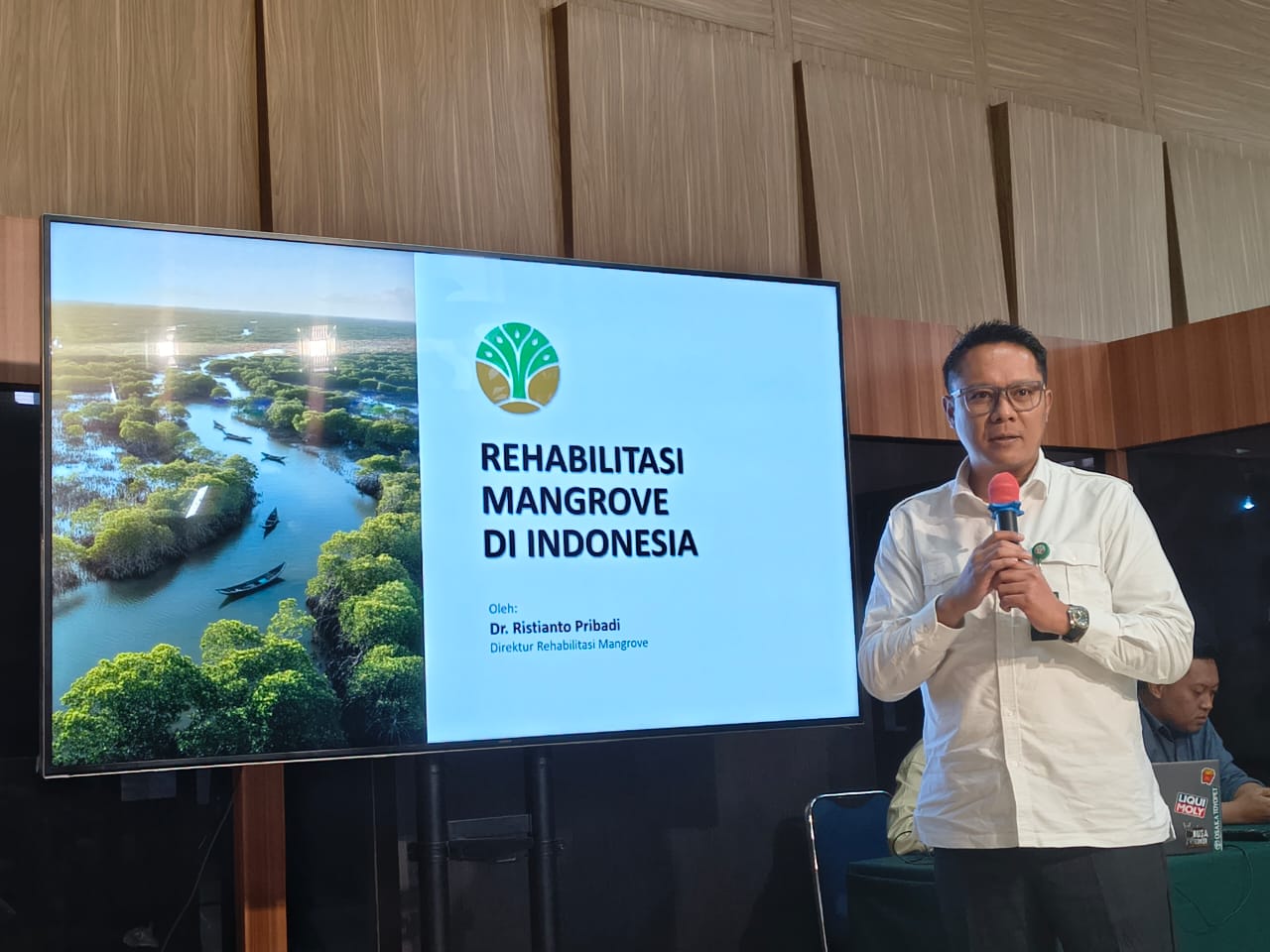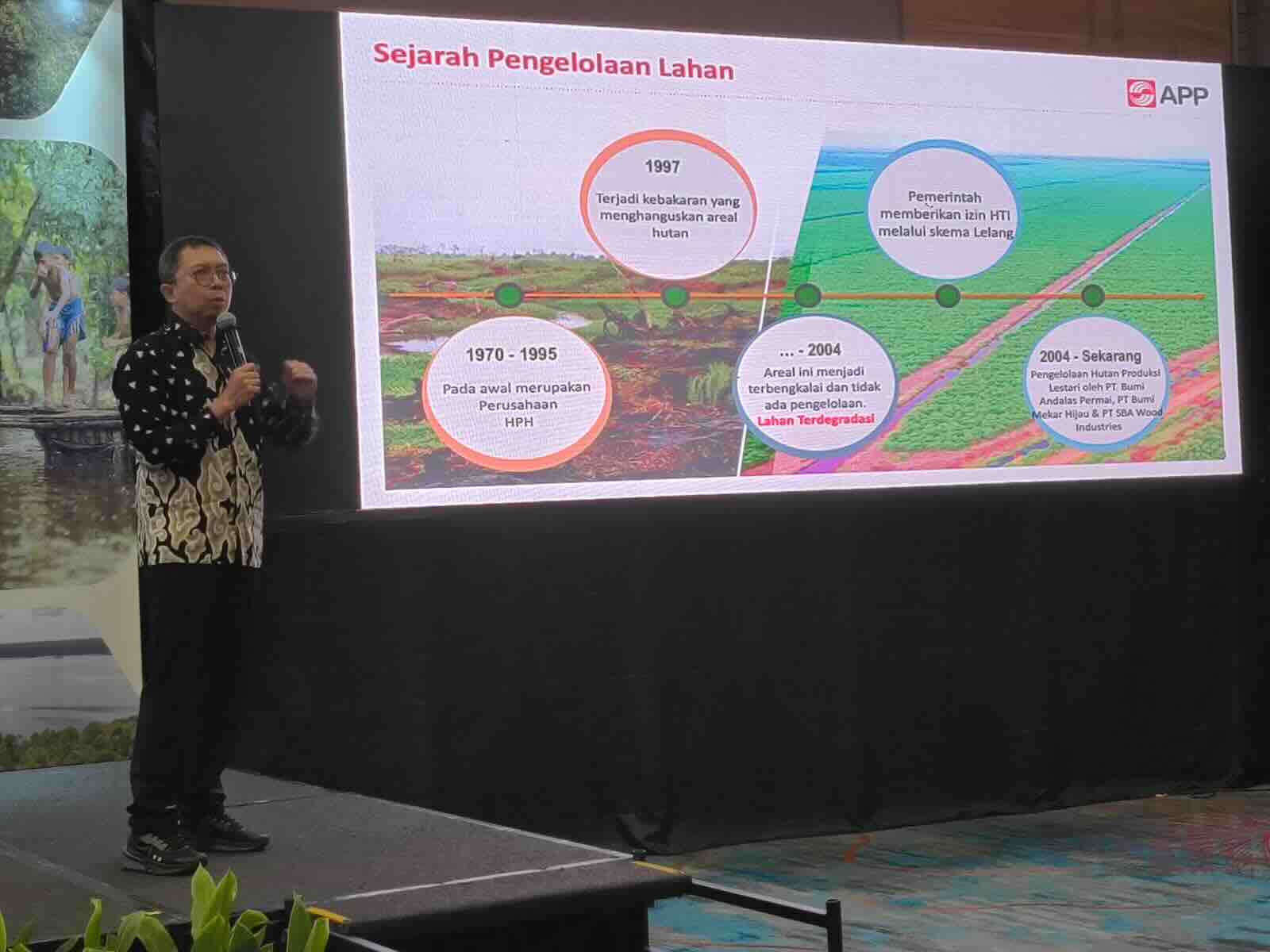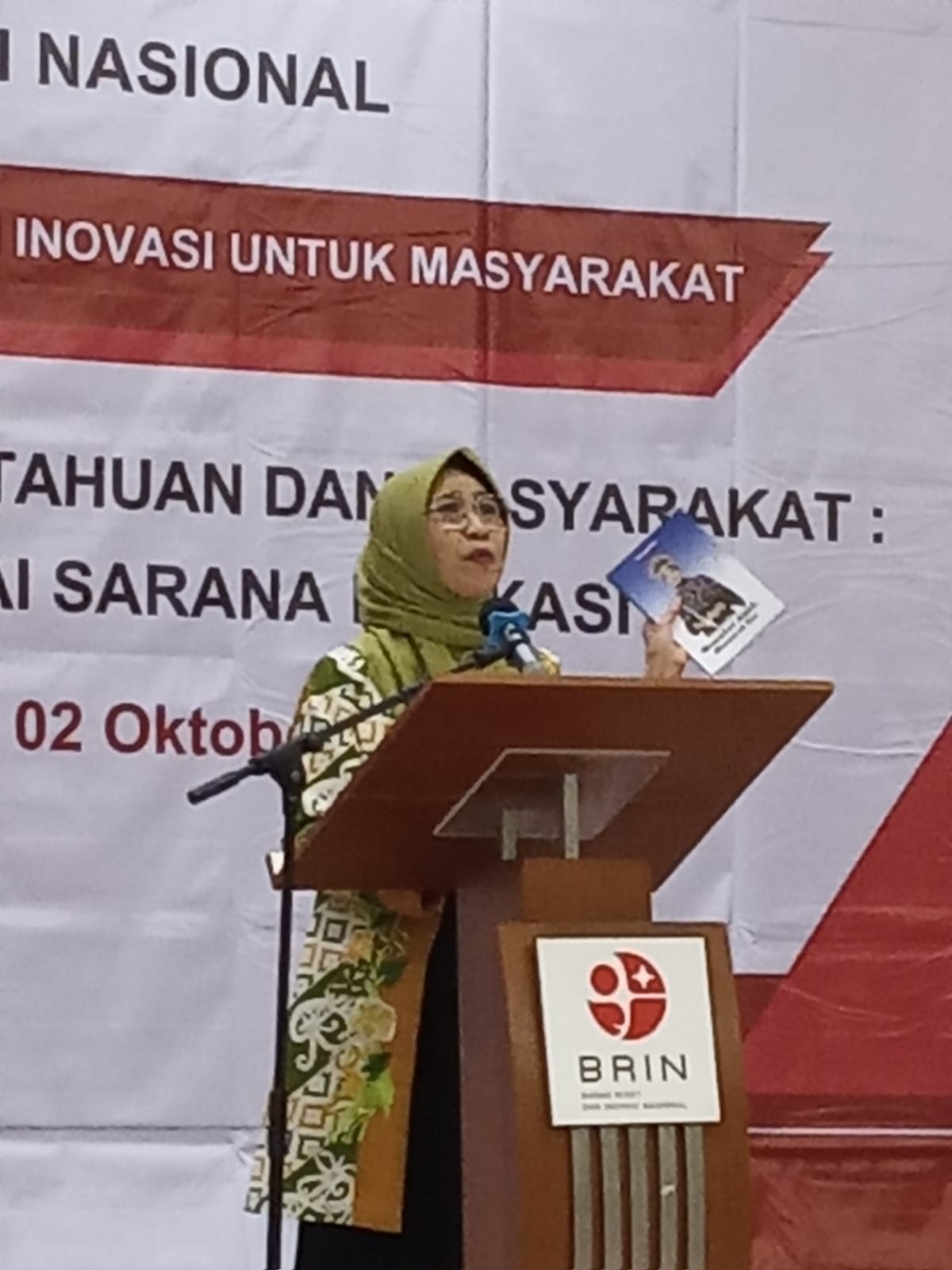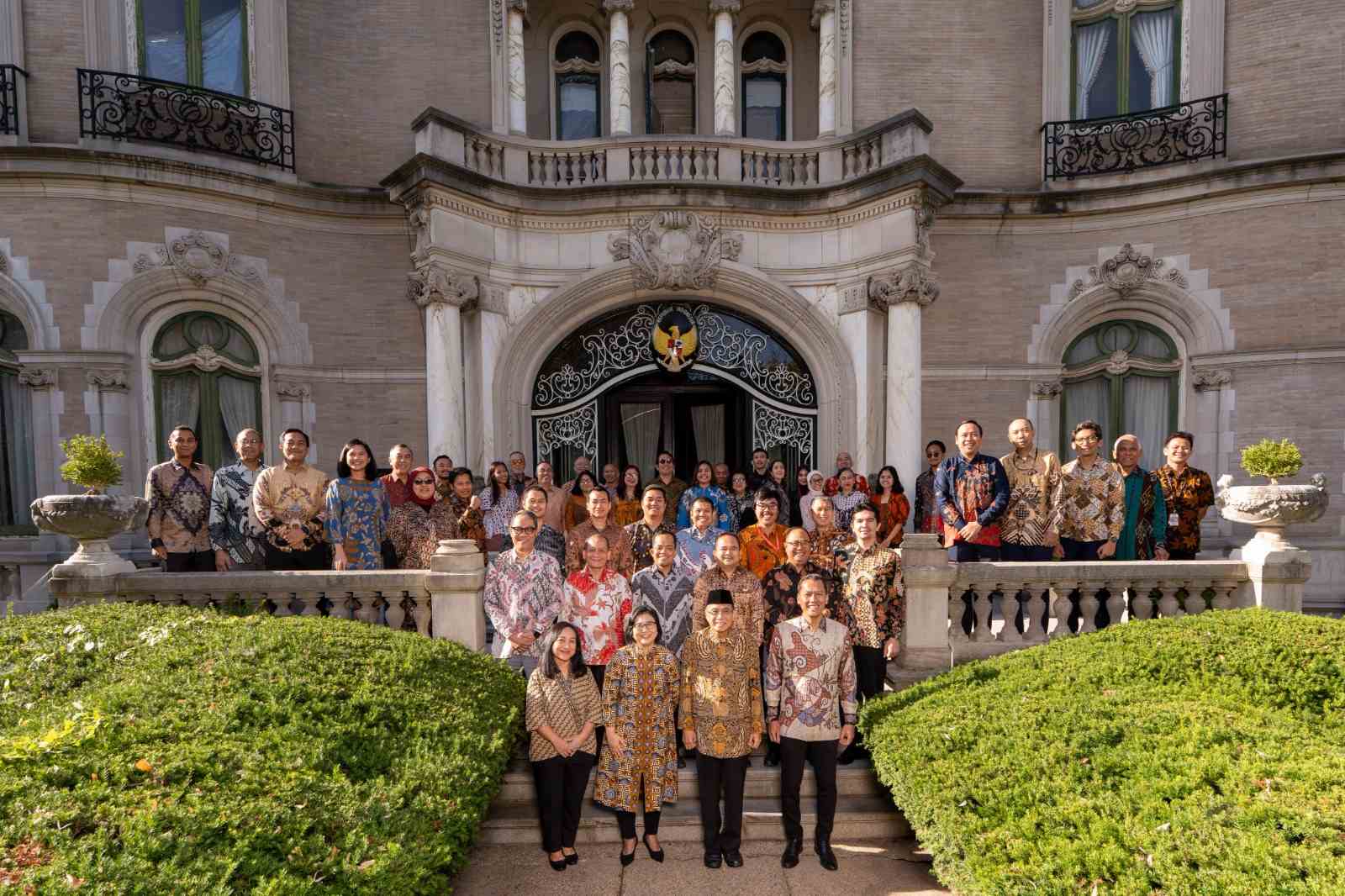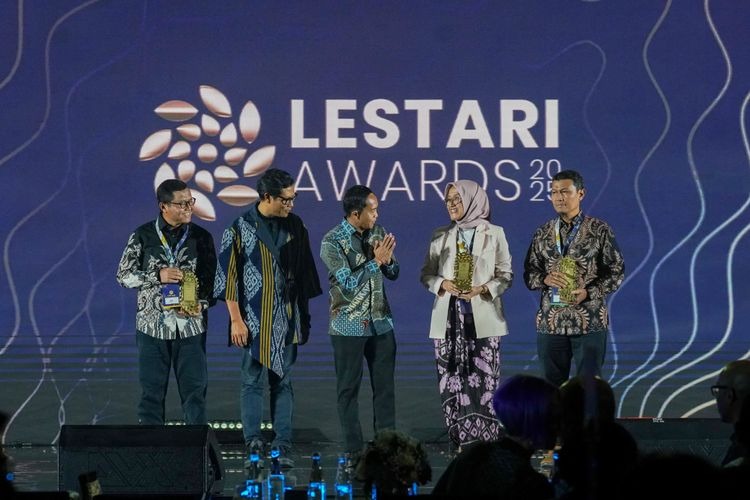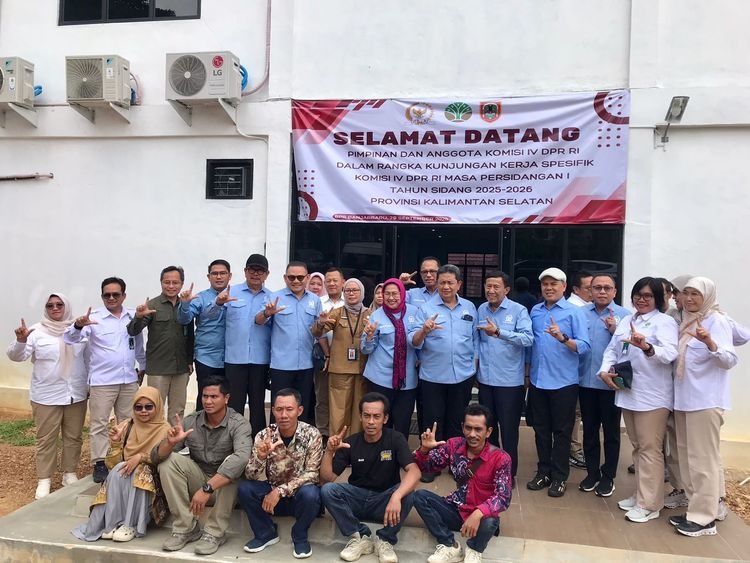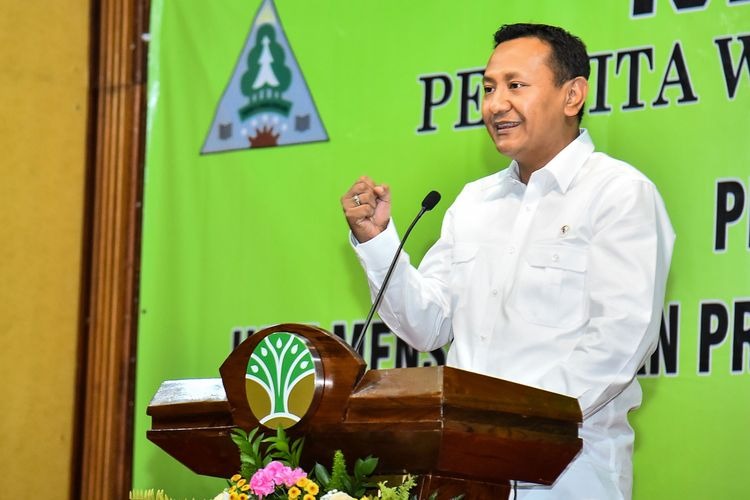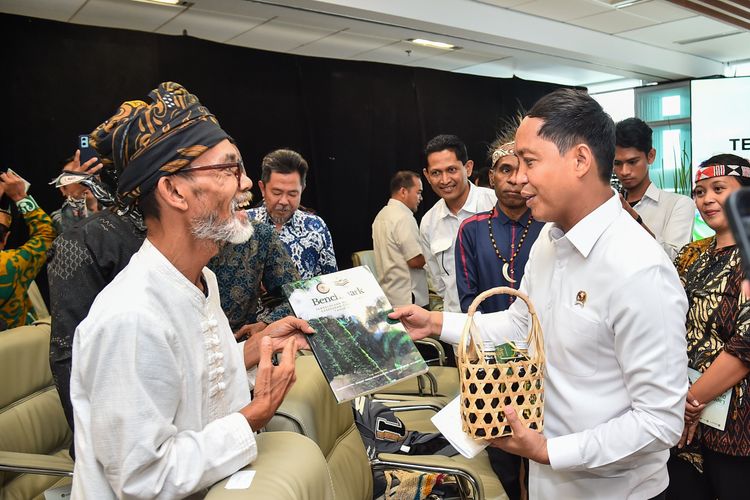Enviro News Asia, Jakarta – The Ministry of Forestry is inviting the public and private sectors to actively participate in the national mangrove rehabilitation program. To encourage community involvement, various incentive schemes are currently being prepared.
Director of Mangrove Rehabilitation at the Ministry of Forestry, Ristianto Pribadi, explained that restoring mangroves nationwide requires support from both the public and private sectors.
“We cannot rely solely on the State Budget. We are now preparing a public engagement strategy,” said Ristianto at a press conference in Jakarta on Thursday (July 24, 2025).
Indonesia has 3.4 million hectares of mangroves. In addition, around 799,000 hectares are potentially restorable as mangroves, of which approximately 70 percent—or about 561,000 hectares—consist of shrimp ponds.
Between 2020 and 2024, mangrove rehabilitation reached 84,721 hectares, most of which was funded through grants, foreign loans, and partnerships with development agencies. However, many of these programs are limited in time and scale, making them unsustainable as long-term solutions.
This situation has prompted the Ministry of Forestry to build public trust, encouraging communities to participate through various participatory schemes, such as corporate social responsibility (CSR) programs, green investments, and collaborations with local communities.
Ristianto stated that going forward, the Ministry will prepare mangrove rehabilitation sites with an area of 6.25 hectares per location. This size aligns with the pixel resolution of satellite imagery used for monitoring, as each pixel on the map represents 6.25 hectares on the ground.
Once rehabilitation is successfully carried out, incentives will be provided, such as public recognition and naming rights for investors at the rehabilitation site.
“For private entities, such recognition is important as part of the company’s green accounting,” said Ristianto.
Rehabilitation locations will be determined after a directive map is completed, dividing areas into priority zone clusters. This map will be used to select sites that are both technically and socially ready for rehabilitation. “Once we have public trust, we can build flexible and sustainable funding support,” Ristianto added.
Furthermore, Ristianto explained that mangrove rehabilitation will also take local economies into account. The government is promoting silvofishery, ecotourism, and the sustainable use of non-timber forest products from mangrove ecosystems as incentives for community participation in the rehabilitation effort.
Ristianto emphasized that all economic activities within forest areas are permitted as long as they are socially accepted and ecologically sustainable. “The key is being socially acceptable and ecologically sustainable,” he concluded. (*)




